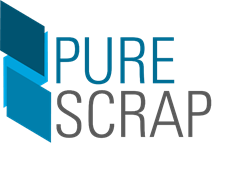PURESCRAP - Purity improvement of scrap metal
Research area Innovation and education in the digital society | Antonius Johannes Schröder | Adrian Götting | Dr. Tobias Wienzek | Beata Lewandowska
The objective of the project PURESCRAP is to increase the use of low-quality scrap grades (post-consumer scrap) by deploying and applying best available technologies to reduce impurities. This is achieved through novel sensor combinations and analysis supported by artificial intelligence. The Social Research Centre – as member of the Clean Steel Partnership - will analyse the social impact of the technologies developed in PURESCRAP and correlated training/ upskilling demands.

European Commission – Horizon
PURESCRAP is coordinated by the metals research institute SWERIM which is located in Sweden. It will run 39 months and is funded by the EU research programme HORIZON EUROPE.
The objective of the project PURESCRAP is to increase the use of low-quality scrap grades (post-consumer scrap) by deploying and applying best available technologies to reduce impurities. This is achieved through novel sensor combinations and analysis supported by artificial intelligence. A key part is the connection between scrap sorter and the steel industry which are the consumers of the scrap. This ensures that there is a demand for the enhanced purification and valorisation methods. The steel industry also enables the industrial scale verification of the PURESCRAP methods, where sorted scrap is used for steelmaking in semi-industrial and industrial scale.
The shredding process is identified as the most promising method leading to impurity liberation and later removal, for which the site of the Swedish scrap supplier STENA is chosen for demonstration. With a better analysis of the scrap material after the sorting and preparation chain, appropriate material handling can be optimised for desired outputs. During the project, sensor stations will be integrated in the two separate processing chains for heavy (cut) and shredded scrap. The proposed innovation of PURESCRAP has the ambition to go far beyond industrial state-of-the-art to achieve a higher recycling rate of post-consumer scrap (increased share of low-quality scrap over the total scrap input by at least 40% or more) compared to the usual practice for a specific steel quality, whereas realistic grades are e.g., rail steel R260 (1.0623; EN13674) and engineering steel 42CrMo4 (1.7225; DIN EN10083). This clearly contributes to the Strategic Research and Innovation Agenda (SRIA) of the Clean Steel Partnership, and to the achievement of the European Green Deal goals regarding circular economy as well as to the reduction of CO2 emissions. The outstanding performance of the proposed PURESCRAP sensor stations will be demonstrated through the implementation at industrial scale at a scrap supplier site.
Contribution of social sciences and humanities (SSH) to the project will be to identify social impact of PURESCRAP solutions on workers (such as operators, technicians). This includes analysis of potential occupational safety and health risks (OSH) and impact on job tasks of affected workers and accordingly changes on skill requirements. SSH will identify opportunities to improve gender equality and to include marginalized groups (migrants, older workers, unemployed youth) when it comes to improved scrap processing in PURESCRAP. This will not only be an ex-post assessment of social impact. SSH will identify requirements of future users and stakeholders to the PURESCRAP solution to anticipate potential social impact and to monitor it throughout the project. Furthermore, SSH will monitor the impact of PURESCRAP on the attractiveness of the steel sector as an employer.
- SWERIM AB (SWERIM - Coordination)
- K1-MET GMBH (K1 MET)
- SSAB EMEA AB (SSAB)
- BT-WOLFGANG BINDER GMBH (REDWAVE)
- SCUOLA SUPERIORE DI STUDI UNIVERSITARI E DI PERFEZIONAMENTO S ANNA (SSSA)
- DANIELI AUTOMATION SPA (DCA)
- LULEA TEKNISKA UNIVERSITET (LTU)
- SPECTRAL INDUSTRIES BV (SPECTRAL)
- Technische Universität Dortmund (TUDO)
- VOESTALPINE STAHL DONAWITZ GMBH (VASD)
- STENA RECYCLING AB (STENA)
- ESTEP PLATEFORME TECHNOLOGIQUE EUROPEENNE DE L'ACIER (ESTEP)
In detail, the following concrete project goals are pursued:
- Reduce the impurities in low-quality scrap grades (post-consumer scrap) by new detection technologies
- Enhance the uptake of post-consumer scrap to produce high-quality steel grades
- Improve the scrap characterisation by new detection technologies
- Reduction of CO2 emissions
- Investigate the social impact of PURESCRAP solutions on workers
- Exploring ways to improve gender equality and to include marginalised groups (migrants, older workers, unemployed youth) with a view to improved scrap processing
PURESCRAP uses novel sensor combinations to enable impurity removal and accurate analysis of the total batch of ferrous metals being produced at the processing plant for post-consumer scrap. The sensor-combinations further allow a continuous generation if datasets for training of models based on AI. The final key element for success is the validation through industrial scale steel production of the produced scrap. Through such validations, the performance is tested, and it also provides feedback to the analysis methods. Sensors will thereby be applied at selected locations to enable improved purification and valorisation of post-consumer scrap. This sensor-based acquiring of data of the scrap process faces challenges, both in the configuration of the sensor solutions, and the handling of the large amounts of data that needs to be transferred, synchronised, and merged. The sensor solutions for the shredded and heavy scrap will make use of same sensor types but adapted to the specific conditions. In the shredding process, the frequency of the sensor readings needs to be higher, since the size of material is small and travels at a higher velocity. For the heavy scrap, which is more varying in size, the distance dependence of the sensors is instead the main challenge and will be solved with automation assisted by 3D object recognition. For detecting all pieces of the shredded scrap with high precision in the analysis, the approach is to combine optical sensors for visual recognition with chemical sensors.
Economic evaluation will be done through a Life Cycle Cost (LCC) analysis, to establish the economic viability of the solution; a market analysis will also be conducted; impact on society (e.g., acceptance and attractiveness of the steel sector as an employer) will be covered by TUDO having long-term experience from national / EU research projects and outstanding knowledge in social science.




![[Translate to English:] [Translate to English:]](/storages/zentraler_bilderpool/_processed_/a/f/csm_Kontakt_b86e8d8ecc.png)
![[Translate to English:] [Translate to English:]](/storages/sfs-sowi/_processed_/6/c/csm_Glasfront_sfs_Header_eae6d325d3.jpg)
